A February produce guide to what’s fresh and delicious right now with tips and recipe inspiration. What’s in season in February? Cabbage, carrots, citrus, leeks, onions, and root vegetables.
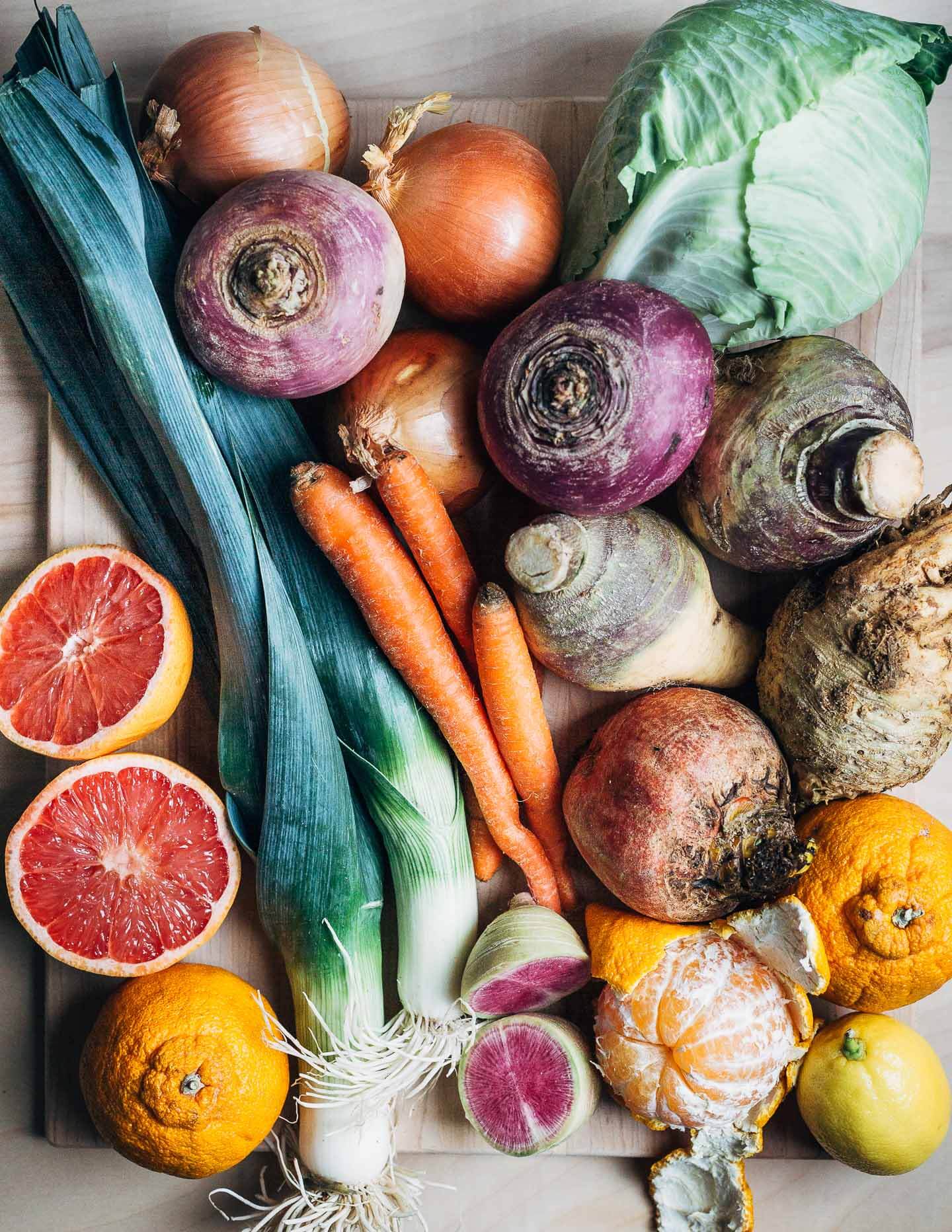
Updated: February 2024
February marks the height of winter. It’s dark and frigid, and whatever winter crops I hopefully tucked under my fabric hoops in the garden are either completely dead or dormant. Still, local growers still have hoop house-grown dark, leafy greens, and stored root vegetables are abundant. With a hot oven and little coaxing, these homely-looking root vegetables can be delicious.
On the brighter side of things, citrus from warmer climes is abundant and in-season. In particular, look for classic naval, blood, or Cara Cara oranges, mandarins, and grapefruit.
Here are a few vibrant, comforting winter recipes to see you through to spring.
Cabbage
Winter cabbage is mild-tasting with a sweet finish. Look for firm, robust heads that feel heavy. Cabbage will keep well loosely wrapped in the fridge for a couple of weeks, making it a lifesaver when you need a vegetable to round out a meal.
- Pressed Cabbage and Kumquat Salad
- Spice-Rubbed Salmon Tacos with Red Cabbage Slaw
- Braised Cabbage with Spring Onions
- Radicchio Salad Cups with Apple-Fennel Slaw
- Caramelized Brussels Sprout and Cabbage Pasta
Carrots
We’re firmly in storage carrot season, though you can still get the fresher kind with greens attached at the grocery store. These sturdy root vegetables bring color and crunch to the somewhat drab winter produce palate. Look for firm, not bendy carrots that are of a similar size. I generally scrub my carrots, but you may want to peel ones with particularly tough skins.
- Carrot and Fennel Soup
- Olive Oil Carrot Cake
- Roasted Carrots with Green Tahini
- Glazed Carrots with Carrot Top Chimichurri
- Avocado, Fennel, and Roasted Carrot Salad
Citrus
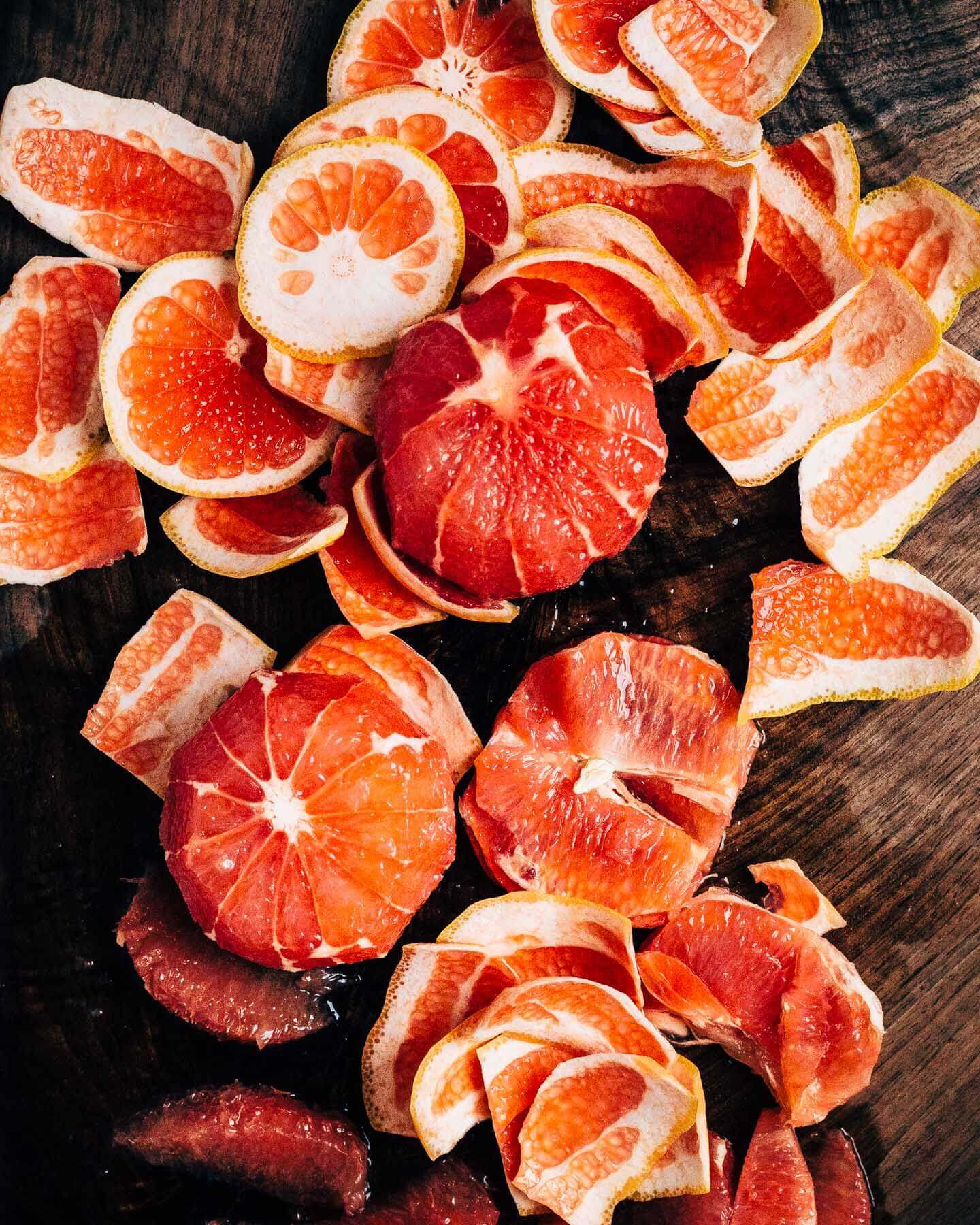
Dear California: Thank you. Here in Virginia, nearly all the citrus we get comes from California, save the occasional Florida grapefruit. Citrus is bright and happy and filled with actual nutrients, so if you feel the winter blues creeping in, add some citrus to your routine.
I covered citrus extensively in the January guide – check that out right here.
Leeks
Leeks bring lovely flavor to a host of winter dishes. Just be sure to rinse the sand off thoroughly.
- Mushroom and Leek Chicken Pot Pie
- Leek and Brussels Sprouts French Bread Pizzas
- Mushroom and Leek Skillet Chicken
- Potato, Leek and Fennel Soup
Onions
Onions are in season just about all year long, but they are a prime storage vegetable and there’s no better time to embrace them than at the height of winter.
- Beef Bourguignon
- Homemade Onion Dip
- Caramelized Onion Tart
- Herby Onion Dip Potato Salad
- Cider-Braised Chicken and Apples with Caramelized Onions
Radishes
Radishes are in season in February. Look for winter-hardy varieties like black or watermelon radishes, or just embrace the more common Easter egg radishes that are widely available at the grocery store. If your radishes come with greens and they look good, rinse them well and toss them into a braise or stew.
- Vegan Tortilla Soup
- Pink Radish Soup
- Radish and Citrus Salad
- Fried Fish Sandwiches with Radish Slaw
- Shaved Radish and Parmesan Salad
- Shrimp Tacos with Radish and Jicama Slaw
Rutabaga, Turnips, and Celery Root
Along with potatoes and sweet potatoes, root vegetables like rutabaga, turnips, celery root, and beets are winter staples. These long-storing roots can have spicy and sweet notes. Try not to be intimidated by their rough exteriors – a good scrub and a peeler easily reveal tender roots inside.
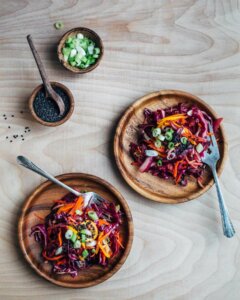







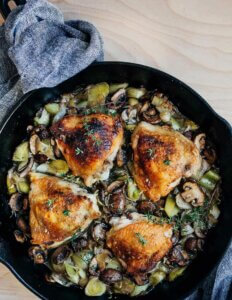
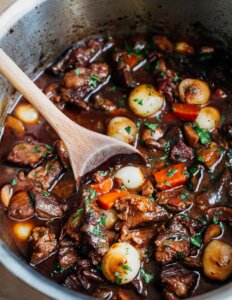
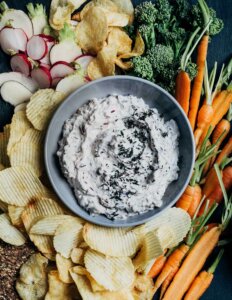







Leave a Reply